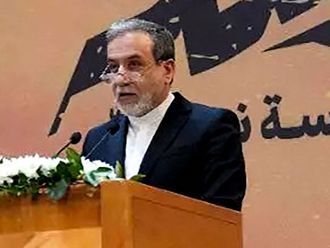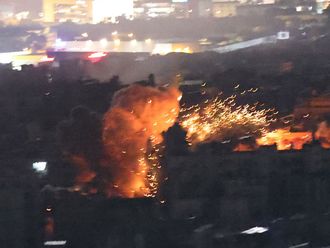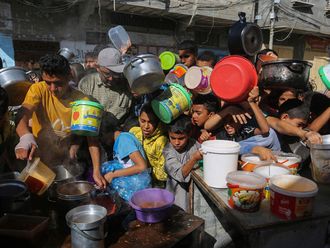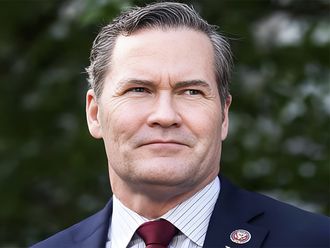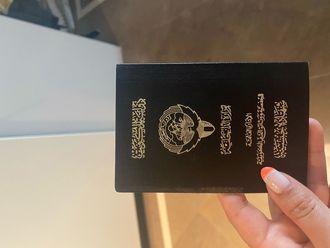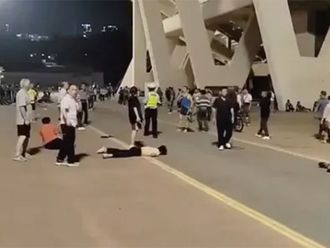Washington: Moved by the Al Assad regime’s rapid advance, the Obama administration could decide this week to approve military aid for the beleaguered Syrian rebels and will weigh the merits of a less likely move to send in US airpower to enforce a no-fly zone over the civil war-wracked nation, officials said on Sunday.
White House meetings are planned over the coming days, as Syrian President Bashar Al Assad’s government forces are apparently poised for an attack on the key city of Homs, which could cut off the rebels from the south of the country. As many as 5,000 Hezbollah fighters are now in Syria, officials believe, helping the regime press on with its campaign after capturing the town of Qusayr near the Lebanese border last week. Opposition leaders have warned Washington that their rebellion could face devastating and irreversible losses without greater support, and the warnings are prompting the United States to consider drastic action. Secretary of state John Kerry postponed a planned trip on Monday to Israel and three other Mideast countries to participate in White House discussions, said officials who weren’t authorised to speak publicly on the matter and demanded anonymity.
While nothing has been concretely decided, US officials said President Barack Obama was leaning closer toward signing off on sending weapons to vetted, moderate rebel units. The US has spoken of possibly arming the opposition in recent months but has been hesitant because it doesn’t want Al Qaida-linked groups and other extremists fighting alongside the anti-Al Assad militias to end up with the weapons.
Obama already has ruled out any intervention that would require US military boots on the ground. Other options such as deploying American air power to ground the regime’s jets, gunships and other aerial assets are now being more seriously debated, the officials said, while cautioning that a no-fly zone or any other action involving US military deployments in Syria were far less likely right now.
Obama also has declared chemical weapons use by the Al Assad regime a “red line” for more forceful US action. American allies including France and Britain have say they’ve determined with near certainty that Syrian forces have used low levels of sarin in several attacks, but the administration is still studying the evidence. The US officials said responses that will be pondered over in this week’s meetings concern the deteriorating situation on the ground in Syria, independent of final confirmation of possible chemical weapons use.
White House spokeswoman Bernadette Meehan said Obama’s advisers were considering all options to hasten a transition in Syria. “The United States will continue to look for ways to strengthen the capabilities of the Syrian opposition,” she said.
Any intervention could have wide-reaching ramifications for the United States and the region. It would bring the US closer to a conflict that has killed almost 80,000 people since Al Assad cracked down on protesters inspired by the Arab Spring in March 2011 and sparked a war that has since been increasingly defined by sectarian clashes.
And it would essentially pit the United States alongside regional allies Saudi Arabia, Turkey and Qatar in a proxy war against Iran, which is providing much of the material to the Syrian government with Hezbollah lending more and more of the manpower.
Syria’s precarious position in the heart of the Middle East makes the conflict extremely unpredictable. Lebanon, across the western border, suffered its own brutal civil war in the 1970s and the 1980s and is already experiencing increased inter-ethnic tensions. Iraq, to Syria’s east, is mired in worsening violence. And Israel to the southwest has seen shots fired across the occupied Golan Heights and has been forced to strike what it claimed were advanced weapons convoys heading to Hezbollah, with whom it waged war in 2006.
Iran could wreak havoc in the region through its support of extremist groups, and US officials fear Iran may seek to retaliate for any stepped-up American involvement by targeting Israel or US interests in the region. It’s also unclear what American action would mean for relations with Russia, which has provided Al Assad with military and diplomatic support even as it claims that it is working with the United States to try to organise a Syrian peace conference.
At the same time, it’s unclear how Washington could fundamentally change the trajectory of a conflict that has increasingly tilted toward Al Assad in recent months without providing weapons to the opposition forces or getting involved itself.
The administration has been studying for months how to rebalance Syria’s war so that moderate, pro-democracy rebels defeat the regime or make life so difficult for Al Assad and his supporters that the government decides it must join a peace process that entails a transition away from the Al Assad family’s four-decade dictatorship.
TALKS DILEMMA
But Al Assad’s military successes appear to have rendered peace efforts largely meaningless in the short term. While Kerry and his Russian counterpart Sergey Lavrov have been trying to rally support for the planned conference in Geneva — first envisioned for May and since postponed until July at the earliest — even America’s allies in the Syrian opposition leadership have questioned the wisdom of sitting down for talks while they are ceding territory all over the country to Al Assad’s forces.
Beyond weapons support for the rebels, administration officials harbour deep reservations about other options. They note that a no-fly zone, championed by hawks in the US Congress such as senator John McCain would require the US to first neutralise Syrian air defence systems that have been reinforced with Russian technology and are far stronger than those that Libyan dictator Muammar Gaddafi had before the US and its Arab and European allies helped rebels overthrow him in 2011. And unlike with Libya, Washington has no clear international mandate for authorising any strikes inside Syria, a point the Obama administration has harped on since late 2011 to explain its reticence about more forceful action.
Homs has one of the biggest Alawite communities in Syria and is widely seen as pro-Al Assad. The rebels control the city centre, however, with regime forces besieging them on the outskirts.
Many towns north of Homs also are rebel-controlled while, to the south, Hezbollah-backed government forces have been clearing rebels from villages and towns. Fierce fighting there over the past three weeks has killed dozens of rebels, troops and Hezbollah fighters and wounded hundreds.
Seizing control of Homs would clear a path for the regime from Damascus to the Mediterranean coast, and firm up its grip on much of the country.


